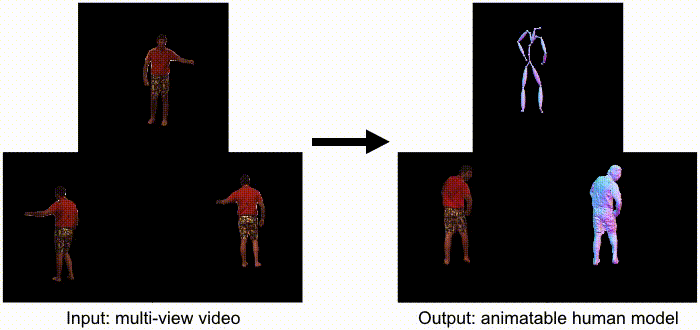News
10/28/2021To make the comparison with Animatable NeRF easier on the Human3.6M dataset, we save the quantitative results at here, which also contains the results of other methods, including Neural Body, D-NeRF, Multi-view Neural Human Rendering, and Deferred Neural Human Rendering.
Animatable Neural Radiance Fields for Modeling Dynamic Human Bodies
Project Page | Video | Paper | Data
Animatable Neural Radiance Fields for Modeling Dynamic Human Bodies
Sida Peng, Junting Dong, Qianqian Wang, Shangzhan Zhang, Qing Shuai, Hujun Bao, Xiaowei Zhou
ICCV 2021
Any questions or discussions are welcomed!
I will update the code and the document.
Since the license of Human3.6 dataset does not allow us to distribute its data, we cannot release the processed Human3.6 dataset publicly. If someone is interested at the processed data, please email me.
Installation
Please see INSTALL.md for manual installation.
Citation
If you find this code useful for your research, please use the following BibTeX entry.
@inproceedings{peng2021animatable,
title={Animatable Neural Radiance Fields for Modeling Dynamic Human Bodies},
author={Peng, Sida and Dong, Junting and Wang, Qianqian and Zhang, Shangzhan and Shuai, Qing and Zhou, Xiaowei and Bao, Hujun},
booktitle={ICCV},
year={2021}
}






